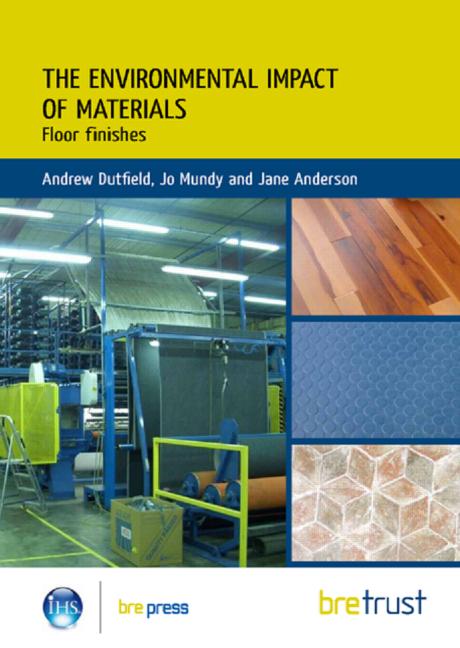Properly Preparing Slabs: Making Informed Decisions Can Pay Significant Dividends

Informed decisions by architects, designers, construction managers and flooring installers about proper slab preparation can save time, money and unnecessary headaches.

To help retailers and installers when it comes to prepping a job, some flooring distributors have experts on staff who are valuable sources of information on the best remediation techniques and technologies.

Failure to remediate defective slabs before new flooring is installed can lead to serious and costly long-term problems and dissatisfied end-users.

To help retailers and installers when it comes to prepping a job, some flooring distributors have experts on staff who are valuable sources of information on the best remediation techniques and technologies.

John Hoover is a territory manager for Fishman Flooring Solutions. Located in Richmond, Va. He has 38 years of experience in the flooring industry and has assisted in the preparation of more than 1,000 slabs for flooring installation during his career. He can be reached at (804) 640-5084 or john.hoover@lfishman.com.





Flooring, by its very nature, is one of the last elements of a construction project to be addressed. As a result, budget dollars and time are often both in short supply when the flooring installation process is about to begin.
This budget and time crunch often leads to ill-informed decisions—and short-term solutions that create long-term problems—regarding the preparation of slabs for a flooring installation. The results of these improperly prepared slabs often include bonding failures between the flooring and the slab, damaged flooring products, voided product warranties, a less-than-great experience for building owners and end users and a black eye for the flooring industry.
Good communication between the general contractor and the flooring installer, who, as a professional, is armed with the facts about the problems incurred when preparing slabs and how to address them, can go a long way to avoiding costly problems—immediate and long-term. In addition, some distributors have experts on staff who can add value to the conversation because they are well versed in how best to address these problems and have an in-depth understanding of the range of products on the market that can most efficiently and effectively prepare a slab for a flooring installation.
The five most common problems with slabs are the presence of asbestos, the presence of old adhesives, high moisture content, curing compounds and moisture mitigation products originally mixed with the concrete and bad slabs. Here is a snapshot of each problem and things to consider when addressing them.
•Asbestos. The word asbestos can be intimidating to many people and justifiably so, because its presence in older indoor environments can have serious health implications. Unfortunately, floor tiles are just one of many places where asbestos can be found in a building. Wherever it is found, it must be treated carefully.
There are three questions that must be answered when dealing with asbestos and slabs. First, should it be removed or left alone? Answering this question calls for a careful consideration of the facts and the options available.
Removing asbestos is a necessity if it has become friable, meaning it can be easily crumbled or reduced to powder by hand pressure. Friable asbestos particles are easily released into the air, where they can be unknowingly inhaled. Material that contains more than 1% asbestos and is friable is considered a regulated asbestos-containing material (RACM) and must be removed according to government procedures. Among other reasons for removing asbestos are if it has been disturbed during the renovation process or there is loose asbestos-containing material present, such as popped floor tiles.
Occasionally asbestos that is not friable can be left in place. For example, it may be in an area that is inaccessible or sealed off and encapsulation is possible. However, given the health implications of asbestos, the likelihood is high the problem will eventually have to be addressed. In many cases, the best course of action is to consult with a reputable firm that specializes in asbestos remediation.
The second question is, who should remove it? The answer is very simple: Asbestos removal should be left to professionals. Not only do they know how to safely remove it, they can also deal with the thorny problems of how and where to dispose it.
The final question is whether the asbestos should be removed with chemicals or mechanically? Each has advantages and disadvantages. While faster and usually less expensive, the chemical removal process, if not properly done, can leave trace amounts of removal chemical, which can harm newly installed flooring.
Mechanical removal is usually more time consuming. It requires the removal of the surface of the slab, usually by shot blasting. This can become complicated because some shot blasting equipment requires a large amount of electricity, which may call for the wiring of new circuits. The tradeoff is that shot blasting will effectively and reliably remove the asbestos from the slab.
•Old adhesives. Removal of old adhesives from a slab is a necessity whenever flooring is replaced. A primary reason is the potential incompatibility of old adhesives with newer products. This is particularly true with today’s latex-based adhesives that often do not bond with the older solvent-based glues that were common many years ago.
Also, if the life cycle of the old adhesive is at its end, new glue will not adhere to it. And, there have been instances when an old, thick adhesive bed bleeds through to the new flooring.
Most major adhesive and flooring manufacturers recommend mechanical removal of old adhesive, eliminating the possibility of chemical residue remaining on the slab. If a chemical removal process is used, it is important to check with the flooring manufacturer beforehand to ensure the chemicals applied will not damage the newly installed floor covering.
•Moisture. This is a significant issue in slabs because of the impact it can have on much of today’s flooring, which is less forgiving with respect to moisture than products of the past. In addition, many of today’s adhesives are more sensitive to moisture than their predecessors.
High moisture content can be caused by various factors. As a result of the faster pace of today’s construction process, newly poured slabs are often not given sufficient time to dry. In other cases, barriers to deal with moisture rising from underneath the slab may have been compromised or, in older buildings, may never have been used at all.
Concerns about the impact of moisture in slabs on flooring products have led most manufacturers to require more stringent pre-installation testing than in the past. The issue is not only about moisture on the surface of the slab, but also to a depth of about 40%.
Tolerance to moisture differs from one flooring product to another, so documenting test results and sharing them with the manufacturer is important.
Given enough time, the slab will dry on its own. However, many fast-paced jobs require a moisture mitigation product that slows the moisture emission rate to an acceptable level.
•Curing compounds and moisture mitigation products mixed with the concrete. To accelerate the curing and moisture mitigation processes in concrete, many contractors are mixing curing and/or moisture-moderating compounds with the concrete before it is poured. This practice, however, is not without its issues because many products act as sealers, addressing moisture problems on the surface of the slab while trapping moisture inside.
This can create problems because before they warrant their products many flooring manufacturers require certain moisture levels be met—on the slab’s surface as well as at a depth of 40%. Many mills require both relative humidity (RH) testing to determine the moisture content in the concrete and calcium chloride testing to determine the rate of moisture vapor being released from the concrete. Additionally, some of these curing and moisture mitigation compounds are not approved by manufacturers and need to be mechanically removed from the surface of the slab before installation can proceed.
•Bad slabs. This is an area that can run the gamut from slabs that are curled and cracked to those that were exposed to a thunderstorm 10 minutes after they were poured to those that were jackhammered in order to run plumbing or electrical wiring.
For every cause of a bad slab, there is a product to address it. These include both fast-setting and slower-setting compounds to address minor imperfections. Self-leveling patches can be used to flatten large surfaces. Some have higher PSIs than others, allowing them to bear heavier loads.
While there are many reasons for bad slabs, there is only one rule of thumb when it comes to dealing with them: Simply put, bad slabs must be remediated to the point where the surface is sufficient for the flooring adhesive to bond to it.
In the end, proper preparation saves money. “By failing to prepare,” Ben Franklin once said, “you are preparing to fail.”
Franklin’s words are certainly relevant today when it comes to preparing a slab for a flooring installation. Many millions of dollars can be saved every year if construction managers and flooring installers would take the time to learn the facts and make informed decisions about proper slab preparation. The stakes are high because informed decisions will lead to satisfied owners and end users, and repeat business for the flooring industry.
John Hoover is a territory manager for Fishman Flooring Solutions. Located in Richmond, Va. He has 38 years of experience in the flooring industry and has assisted in the preparation of more than 1,000 slabs for flooring installation during his career. He can be reached at (804) 640-5084 or john.hoover@lfishman.com.
Looking for a reprint of this article?
From high-res PDFs to custom plaques, order your copy today!














